History Waits Beneath the Waves
History is embedded in the Florida Keys, both above and below the water. Over a 500-year history, an estimated 1,000 or more shipwrecks have occurred in the waters around the Florida Keys. The stories of the past, from the 16th century through modern times, can be unlocked by these shipwrecks and historic resources found in Florida Keys National Marine Sanctuary.
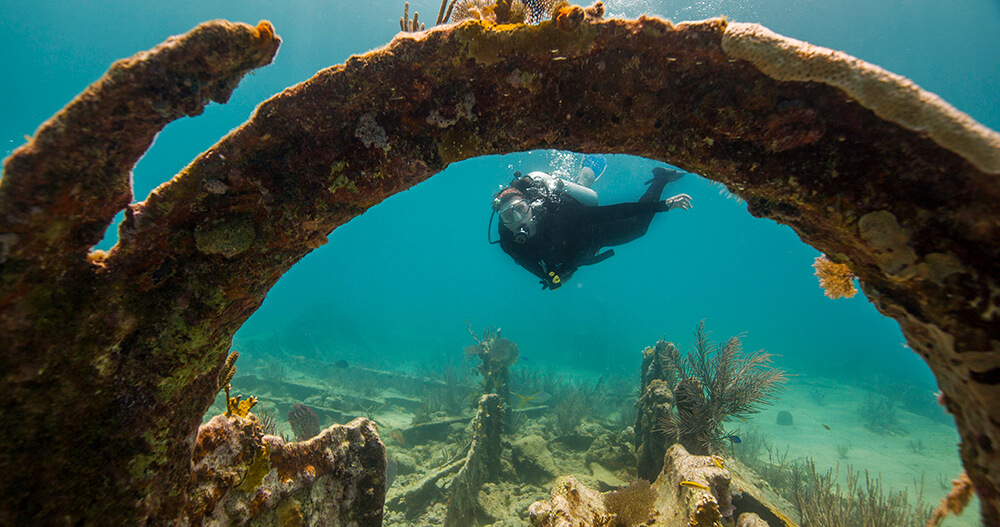
The very word ‘maritime' invokes tradition, sacrifice, and courage. Our maritime legacy includes those who lived in the Florida Keys and considered the coastal waters their backyard as well as oceanic travelers who journeyed far from home. Florida Keys National Marine Sanctuary honors and celebrates this rich maritime history by documenting these historic remains and telling the stories from the past. These historic resources can teach us about the people that came before us.
Over the past 30 years, collaborative efforts to document underwater historical resources in Florida Keys National Marine Sanctuary have included federal and state partners, volunteers, university researchers, historical resources permittees, avocational groups, and private residents who have contributed to 122 projects supported by 996 individuals.
An Underwater Trail of Shipwrecks
Want to learn more about submerged maritime heritage in the Florida Keys? Explore the Florida Keys National Marine Sanctuary's Shipwreck Trail, which provides historical and archaeological information about nine distinct shipwreck sites within the sanctuary. These nine sites were selected for their historical, biological, archaeological, and aesthetic values, site condition and stability. They offer a range of visitor accessibility from snorkeling to scuba diving.

Each site is an archetype of one of the three broad periods of South Florida's maritime history: European Colonial - 16th-18th century, representing the earliest examples of shipwrecks discovered in the sanctuary; American - 18th-20th century, representing the period in which a young United States became a cohesive nation with dramatically expanded maritime transportation; and Modern - 20th century-World War II, representing increasingly larger motorized vessels.
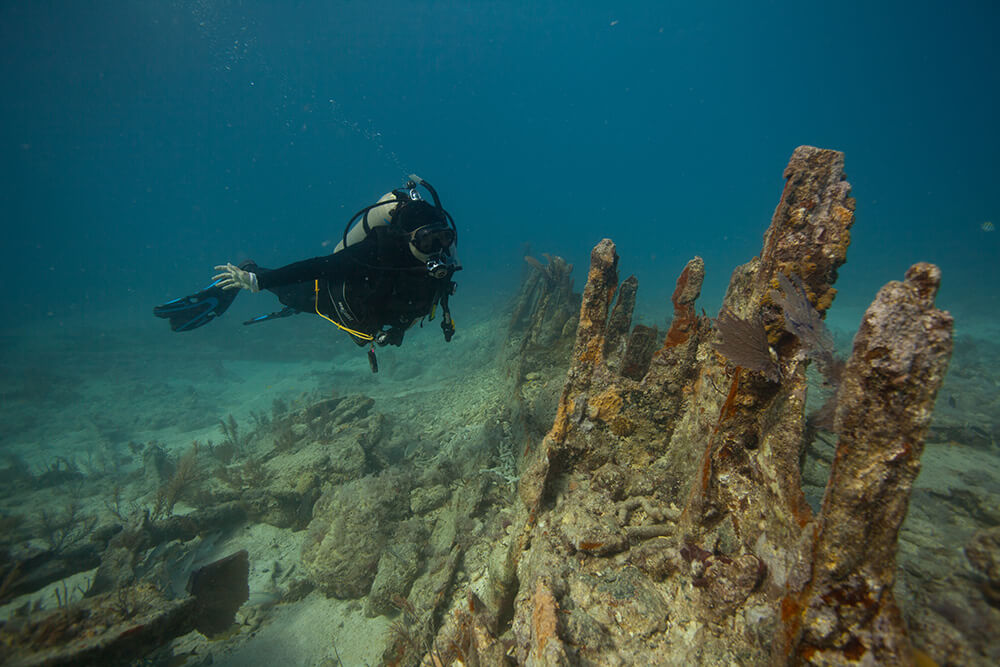
Significant Deep Water Shipwreck Discovery
In Islamorada, the steamship Queen of Nassau rested unknown in 230 feet of water for nearly 80 years. The 200-foot vessel was mysteriously lost in July 1926 along the Florida Keys while in transit to Tampa. Forgotten and unmarked on charts, the vessel was a favorite fishing spot for local anglers.
In 2001, technical divers from the Association of Underwater Explorers discovered the large upright ship and notified sanctuary staff. Combining measurements, imagery, and observations of the shipwreck's unique design characteristics with historical research, NOAA archeologists were able to reveal its identity.

The ship had been built in England in 1904 for the Canadian Fisheries Protection Service and named the CGS Canada, it was the first of a series of armed vessels that the Canadian government began using to protect their fisheries and coastlines. After years in service the vessel was decommissioned in 1919. The ship was refurbished and put into service as a passenger liner between Miami, Florida and Nassau, The Bahamas. This vessel is an example of the way that Florida Keys maritime heritage connects people and places from all over the globe.
History and Navigation
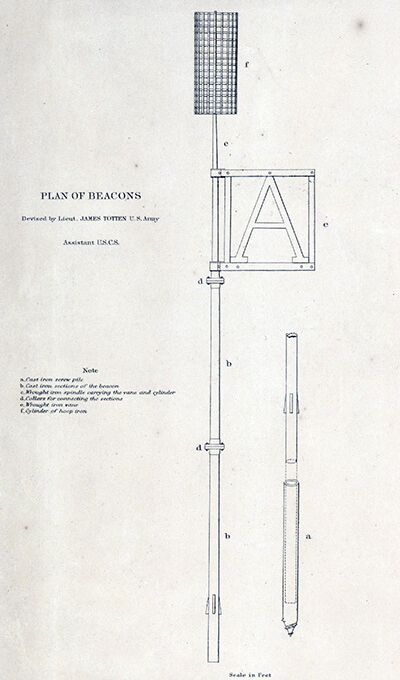
The coral reefs enjoyed today by many were, at one time, considered a terrible menace to life and property because they caused hundreds of shipwrecks. In the 19th century, the U.S. federal government responded by installing lighthouses and unlit beacons along the reef to make maritime commerce safer.
While lighthouses may be the most visible part of that story, a series of 15 unlit markers first installed in the early 1850's were some of the earliest attempts to improve maritime safety. These unlit navigation aids are commonly known as Totten Beacons, after the U.S. Army's Lieutenant James Totten, who was responsible for overseeing the beacon installations.
Following more than a decade of investigation into the Totten Beacons, sanctuary archaeologists began a comprehensive survey of the beacons in the Florida Keys. Researchers compiled historical information, including locations where beacons were placed in the 1850s and the 1880s. This project supported the sanctuary's mission to protect maritime heritage resources, and established a baseline for monitoring the condition of the beacons.
The history of these navigational aids is an integral part of the overall maritime story of the Florida Keys, intertwined with natural, living resources found on the reefs that mariners sought to avoid. Today, the remnants of the Totten Beacons provide a glimpse into the progression of modern maritime navigation. In 2014, the sanctuary received a Preserve American Grant to continue field investigations to document the unlit markers.
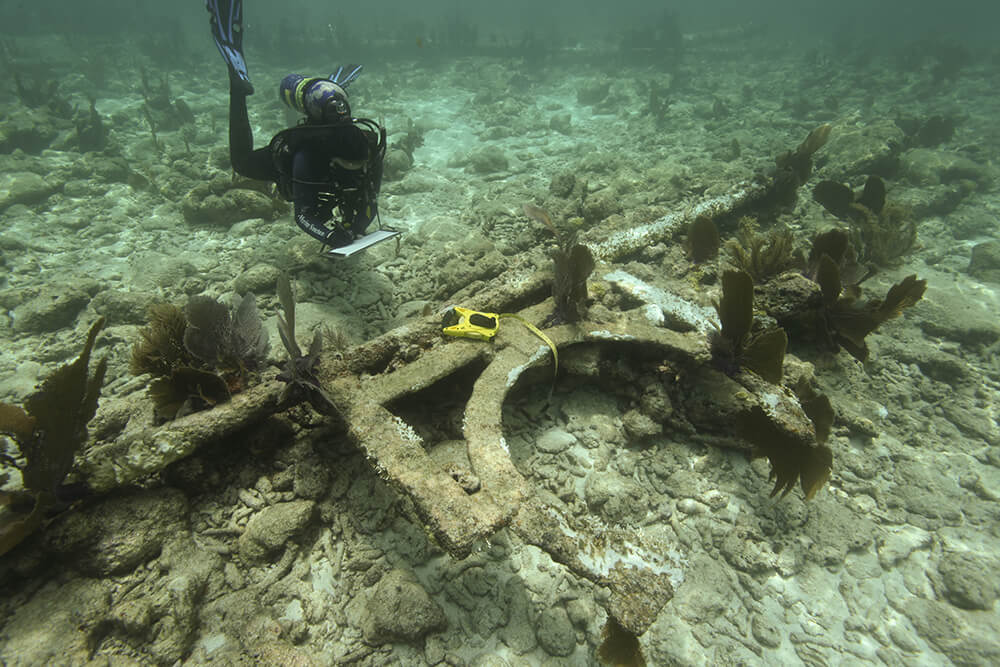
Partnership With a Purpose
For more than a decade, Florida Keys National Marine Sanctuary has been collaborating with Diving With A Purpose, an organization that provides education and training programs, mission leadership, and project support services for submerged heritage preservation and conservation projects worldwide. Since 2010, Diving with a Purpose and Florida Keys National Marine Sanctuary staff have documented five unique shipwrecks, emassing a total of 11,070 hours of volunteer time from 205 Diving with a Purpose citizen scientists.
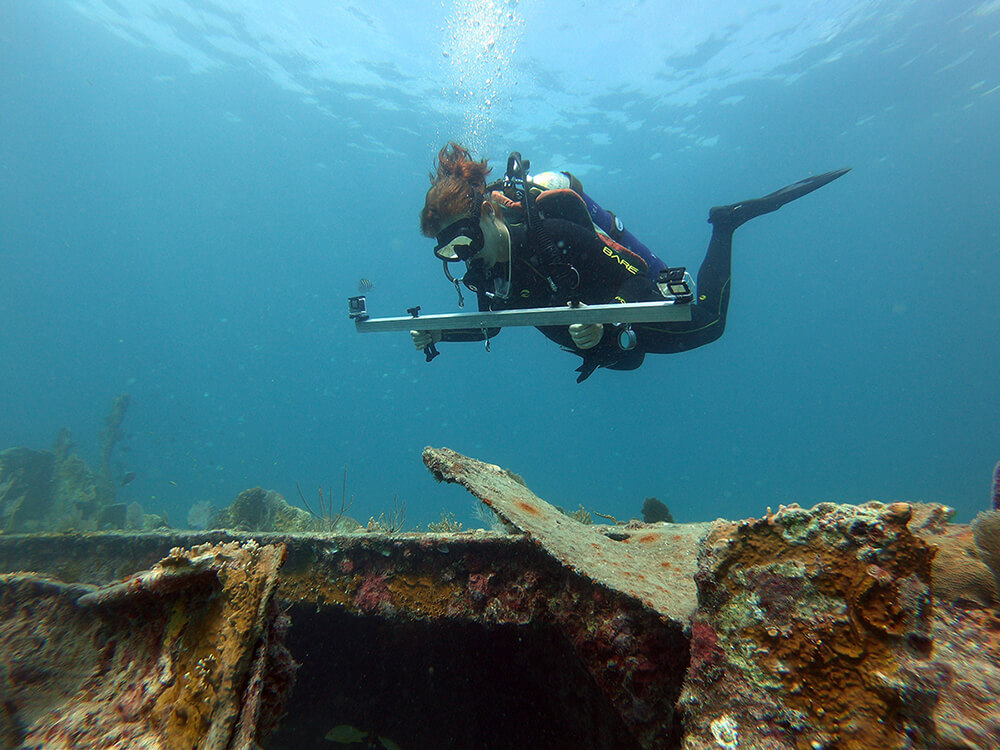
Florida Keys National Marine Sanctuary and Diving With A Purpose, along with the Mel Fisher Maritime Heritage Society and RPM Nautical Foundation, investigated the suspected shipwreck site of the pirate slave ship Guerrero, which wrecked at the northern end of Key Largo in 1827.
Guerrero was being chased by the British vessel H.M.S Nimble to prevent the sale of enslaved Africans to Cuban plantations. At the time, Guerrero carried 561 enslaved Africans; as a result of its collision with the reef, 41 people drowned. Those who survived faced incredible hardship -- some people were recaptured by the pirates and sold into slavery in Cuba, while a luckier few were returned to Africa after years of legal limbo and exploitation, at the American Colonization Society's settlement in Liberia.
This partnership continues to work toward conclusively identifying the final resting place of the pirate slave ship Guerrero and to use maritime archaeology to amplify the story of the enslaved Africans whose voices were silenced in our past.
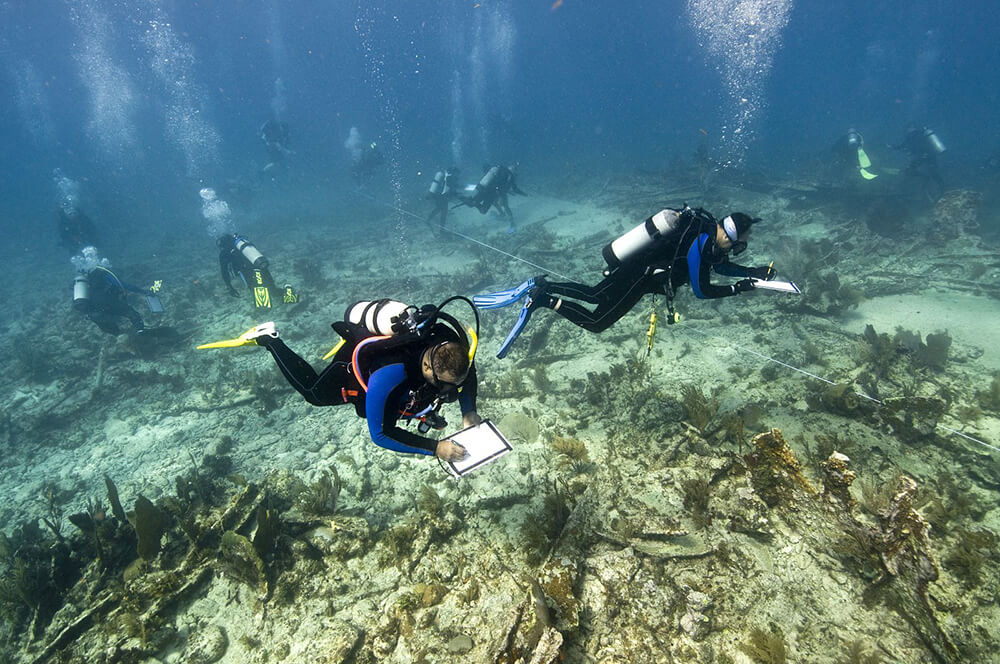
Diving with a Purpose also assisted Florida Keys National Marine Sanctuary in mapping two previously unidentified large steamship wrecks at Elbow Reef in Key Largo, Florida. These sites are now known to be the British steamships Hannah M. Bell and Acorn. The site maps produced from this project provide the sanctuary with baseline documentation of historic shipwrecks and interpretive information to share with the public.
Over the last 30 years, sanctuary staff, volunteers and partnerships have helped to bolster our knowledge and document our underwater history. We hope that through revealing Florida Keys heritage and telling the stories of our past, we can contribute to a sense of community that will support our nation for the next 30 years -- and beyond.

